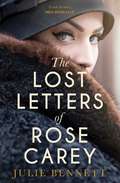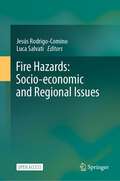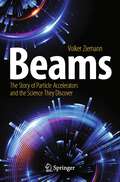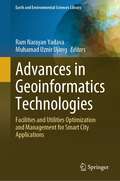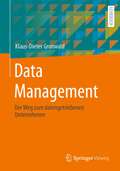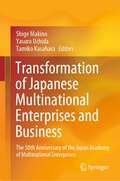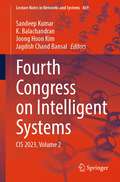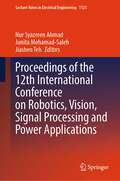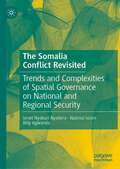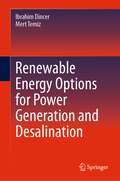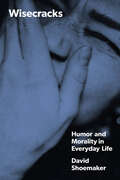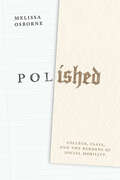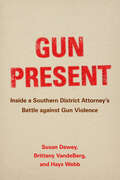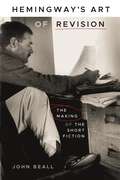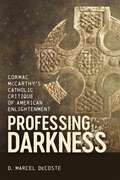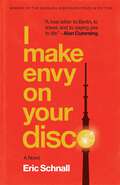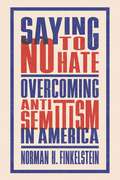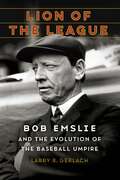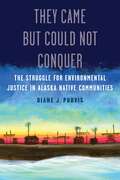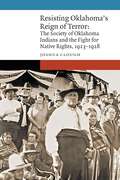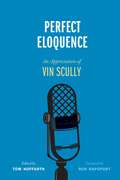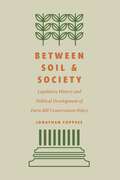- Table View
- List View
The Lost Letters of Rose Carey
by Julie BennettA stirring tale of mystery and romance, inspired by the life of 1920s Australian film icon and &‘million-dollar mermaid&’ Annette Kellerman.BLUE MOUNTAINS, 2024: Working on a documentary at the historic Carrington Hotel, videographer Emma Quinn discovers a box of handwritten letters belonging to Rose Carey, water dancer and golden girl of the silent film era. Intrigued, Emma begins to read through them, slowly uncovering a deadly secret.SYDNEY, 1923: Rose Carey has faced enough scandal to last a lifetime. After an accident and near-death experience, the threat of bankruptcy, and rumours of her romantic entanglements, Rose decides to take matters into her own hands and propose to her business manager, Walter. A respectable marriage will redeem her reputation and give her the good publicity she needs – problems solved. But she doesn&’t account for the unexpected feelings brewing between her and Walter, or for the possibility that the accident wasn&’t so accidental after all … When she suffers another brush with death, Rose realises that someone close to her wants her out of the way. Who in her close-knit circle has the most to gain? Can she trust anyone, other than herself? 'A tour de force' Meg Keneally, author of Fled &‘Part mystery, part love story, this dazzling novel completely captivated me&’ Jillian Cantor, author of Half Life 'A compelling story of love, loss and the true meaning of family' Nina D. Campbell, author of Daughters of Eve
Ask Jules: Love yourself and live your dream
by Jules RobinsonHonest, first-hand advice from the beloved TV personality, entrepreneur, wife and mother. Since finding love on Married at First Sight, Jules Robinson has had a whirlwind five years – she got married (for real), had a baby, and became a purpose-driven entrepreneur. Though there have been setbacks and challenges, Jules has stayed true to herself throughout. Jules is beloved for her unshakeable optimism, vulnerability, and sense of fun. But what is the real secret to her confidence? How does she juggle motherhood with multiple businesses, while remaining her most glamorous self? In Ask Jules, Jules Robinson puts it all out on the page. She shares her personal experiences, expert tips, and empowering lessons on style, family, motherhood, self-love, wellbeing, manifesting and practising gratitude. Jules&’s mission is to give you the tools you need to go after the life you&’ve always dreamed of, and to feel good about yourself while you&’re doing it – exactly as you are, right now.
Fire Hazards: Socio-economic and Regional Issues
by Jesús Rodrigo-Comino Luca SalvatiThe open access book aims to show the readers novel, relevant and reproducible power of synergistic collaborations between European research groups and stakeholders with the objective to synthesize the existing knowledge and expertise about fire management and hazard and defining a concerted research agenda that promotes an integrated approach to create fire-resilient landscapes, taking into account biological, biochemical and physical, but also socio-economic, historical, geographical, sociological, perception and policy constraints. This is an urgent societal need due to the expected further intensification and geographical spreading of wildfire regimes under Global Change. Fire has been part of the Earth's System for the last 400 million years, and humans are the sole species that controls and manages fire. We have used fire for over a million years, both, as hunter-gatherers managing the landscape with fire and as farmers using fire as a low-cost, efficient and ecological tool for clearing and maintaining the productivity of the land. Fire has been highlighted as the most influential element in the development of human societies. The increase in prolonged dry and hot periods observed in many regions of the world is exacerbating the risk of fire. The causes of increased fire risk are not only linked to climate change but are also a consequence of economic and social changes and political decisions. Over the past few decades, many countries’ rural areas have seen significant depopulation and a reduction in land management as residents moved to cities or even other countries in search of work. The resulting rural depopulation has led to revegetation of the abandoned agricultural land, which favors fire spread. The enhanced risk of fires is moving beyond the capacity of even the best-funded wildland firefighting teams and therefore calls for the development of new approaches to fire management that are key nowadays at different scales. Instead of focusing primarily on increasing firefighting capabilities, a more effective approach is needed that focuses on long-term fire prevention through vegetation management by reducing fuel load or managing fuel type and fuel continuity at a landscape level. FIRElinks (COST Action CA18135) is developing the EU-spanning network of scientists and practitioners involved in forest fire research and land management with backgrounds such as fire dynamics, fire risk management, fire effects on vegetation, fauna, soil and water and socio-economic, historical, geographical, political perception and land management approaches. Among the different Working Groups, number 5 is aimed to connect communities from different scientific and geographic backgrounds, allowing the discussion of different experiences and the emergence of new approaches to fire research, human management, regional issues and socio-economic aspects.
Beams: The Story of Particle Accelerators and the Science They Discover (Copernicus Books)
by Volker ZiemannThis book describes and explains the world of particle accelerators and the physics they study. The presentation is non-technical (E=mc2 is the only equation!) and the prose accessible. By following the co-evolution of particle accelerators and particle physics, readers will learn why the accelerators are built, how they work, and what "results" they produce. The book highlights the great ideas (e.g. synchrotron) and technological advances (superconducting magnets) that boosted the potential of accelerators and led to new discoveries, eventually resulting in the standard model of particle physics. Many concepts are illustrated with figures derived from three-dimensional models; these include theaccelerators, detectors, and particles. Background information about the main protagonists, along with pointers to further reading, e.g. from "Scientific American," are provided in endnotes.
Advances in Geoinformatics Technologies: Facilities and Utilities Optimization and Management for Smart City Applications (Earth and Environmental Sciences Library)
by Ram Narayan Yadava Muhamad Uznir UjangThere are many GIS products for smart cities to implement smart city projects or activities. Most of the Geoinformatics Technologies and its application books are theoretical and lack of examples with real world data and step by step explanations to understand the facilities and utilities optimization and management for smart city applications and socio-economic aspects.This book focuses and discusses topics related to how technological advances in Geoinformatics can help in the management operations of smart city applications to help our environment to be smart. Specifically, the volume focuses on how these advancements can help optimize and manage facilities and utilities. This book focuses on geoinformation modelling, geo-smart city applications, geoinformation technology, information system and computer science, and geolocation and positioning as its five primary areas of discussion. Each of these primary subjects delves into the application that uses geoinformatics technology in greater depth. This covers the use of Geoinformatics technology in the prevention of crime, coastal erosion, carbon emission modelling, landslide modelling, urban farming, and various other applications linked to the field. This book's objective is to provide a comprehensive review of the accomplishments that geoinformatics has made in a number of different application areas for smart cities. It covers Geoinformation Technologies, Geoinformation Modelling, Information System and Computer Science, Geolocation & Positioning, and Geo-Smart City Applications.The book will be useful to graduate students, university faculty, and researchers in Geoinformatics sciences/engineering and architecture and town planning. It will also be useful to entrepreneurs, professionals, and planners in policy and decision making at the local, state and national levels.
Data Management: Der Weg zum datengetriebenen Unternehmen
by Klaus-Dieter GronwaldDieses Lehrbuch betrachtet Data Management als interdisziplinäres Konzept mit Fokus auf den Zielen datengetriebener Unternehmen. Im Zentrum steht die interaktive Entwicklung eines Unternehmensdatenmodells für ein virtuelles Unternehmen mit Unterstützung eines online Learning Games unter Einbeziehung der Aufgaben, Ziele und Grundsätze des Data Managements, typischer Data-Management-Komponenten und Frameworks wie Datenmodellierung und Design, Metadaten Management, Data Architecture, und Data Governance, und verknüpft diese mit datengetriebenen Anwendungen wie Business Warehousing, Big Data, In-Memory Data Management, und Machine Learning im Data Management Kontext.Das Buch dient als Lehrbuch für Studierende der Informatik, der Wirtschaft und der Wirtschaftsinformatik an Universitäten, Hochschulen und Fachschulen und zur industriellen Aus- und Weiterbildung.
Bioactive Compounds in the Storage Organs of Plants (Reference Series in Phytochemistry)
by Hosakatte Niranjana Murthy Kee Yoeup Paek So-Young ParkThis book offers a comprehensive and authoritative review of bioactive substances found in plant underground stems, roots, rhizomes, corms, and tubers from all around the world. Tubers and starchy roots are plants that store edible starch content in underground stems, roots, rhizomes, corms, and tubers. They are a key source for both human and animal consumption and are rich in carbohydrates. They are widely used as industrial crops as well. Phytochemicals found in tubers and roots, such as phenolics, terpenoids, and alkaloids, have anti-inflammatory, anti-cancer, hypoglycemic, hypocholesterolemic, and antibacterial properties. Except for common potatoes, sweet potatoes, and cassava, the nutritional and health benefits of many tuberous crops have not yet been adequately investigated. This book sheds new insights into these topics by addressing several plant metabolites found in storage organs, which can be seen as scientifically neglected even though they have a high economic relevance as food and pharmaceutical sources. Divided into 6 parts, this book discusses how bioactive chemicals found in plant storage organs are synthesized and how their bioactive principles are specifically expressed in underground stems, roots, rhizomes, corms, and tubers. Additionally, each chapter includes background information on the plant, its parts, its nutritional makeup, chemical components, and biological functions. Given its breadth, the book appeals to a wide readership, from scholars through graduate and post-graduate students to professionals in the industry.
Transformation of Japanese Multinational Enterprises and Business: The 50th Anniversary of the Japan Academy of Multinational Enterprises
by Shige Makino Yasuro Uchida Tamiko KasaharaThe purpose of this book is to highlight how current successful Japanese multinational enterprises (MNEs) and companies have changed their business or business models in the past three decades. Japanese MNEs received a lot of attention from academia and industry during the 1980s and the early 1990s, and their factors for success have been compared with those of Western MNEs. Unfortunately, following the collapse of the “bubble economy” in the early 1990s, international business researchers and practitioners’ attention has turned away from Japan and its MNEs to emerging markets, notably the rapidly growing China.Japanese MNEs have faced the mature domestic economy and also have had to overcome many new challenges in the twenty-first century, such as rapid aging, depopulation, and response to new technologies. Japanese MNEs and companies today are being forced to respond to new business environments never seen in the past. The prerequisites for business activities have significantly changed from those of former Japanese companies and their management practices. Even in such a difficult situation, however, many Japanese MNEs and emerging companies have achieved steady growth and have succeeded by changing their business models. This book provides the reader with new directions for research and lessons by analyzing the challenges of Japanese multinational enterprises and emerging companies. The redirection of attention is expected to have a positive impact on the field of international business study and practice.
Fourth Congress on Intelligent Systems: CIS 2023, Volume 2 (Lecture Notes in Networks and Systems #869)
by Sandeep Kumar K. Balachandran Joong Hoon Kim Jagdish Chand BansalThis book is a collection of selected papers presented at the Fourth Congress on Intelligent Systems (CIS 2023), organized by CHRIST (Deemed to be University), Bangalore, India, under the technical sponsorship of the Soft Computing Research Society, India, during September 4–5, 2023. It includes novel and innovative work from experts, practitioners, scientists, and decision-makers from academia and industry. It covers topics such as the Internet of Things, information security, embedded systems, real-time systems, cloud computing, big data analysis, quantum computing, automation systems, bio-inspired intelligence, cognitive systems, cyber-physical systems, data analytics, data/web mining, data science, intelligence for security, intelligent decision-making systems, intelligent information processing, intelligent transportation, artificial intelligence for machine vision, imaging sensors technology, image segmentation, convolutional neural network, image/video classification, soft computing for machine vision, pattern recognition, human-computer interaction, robotic devices and systems, autonomous vehicles, intelligent control systems, human motor control, game playing, evolutionary algorithms, swarm optimization, neural network, deep learning, supervised learning, unsupervised learning, fuzzy logic, rough sets, computational optimization, and neuro-fuzzy systems.
Proceedings of the 12th International Conference on Robotics, Vision, Signal Processing and Power Applications (Lecture Notes in Electrical Engineering #1123)
by Nur Syazreen Ahmad Junita Mohamad-Saleh Jiashen TehThis book presents selected papers from the Proceedings of the International Conference 12th International Conference on Robotics, Vision, Signal Processing, and Power Applications ROVISP 2023, held in Penang, Malaysia, covering topic areas divided into the following tracks: (1) Robotics, Control, Mechatronics, and Automation; (2) Vision, Image and Signal Processing; (3) Telecommunication Systems and Applications; (4) Electronic Design and Applications; (5) Electrical Power, Energy, and Industrial Applications. Its content highlights state-of-the-art technologies adopted by the relevant industries which appeal to researchers and industrial practitioners working in the field.
The Somalia Conflict Revisited: Trends and Complexities of Spatial Governance on National and Regional Security
by Israel Nyaburi Nyadera Nazmul Islam Billy AgwandaThis book aims to examine how informality of spatial governance has influenced the evolution of the conflict in Somalia and the region. It not only reopens the debate over how the irregular conflicts can transcend national boundaries, but also presents the complexities of spatial governance on national and regional security. The book examines how socio-political and identity bonds play out in spatial governance sometimes resulting to informal control of vast national territories. The book argues that such informally governed spaces increase the level of security threat vulnerability at the national and regional levels. The book therefore adds to the existing literature which has not only to be dominated by discourses on the impact of identity on the conflict but also fall short of connecting the impact of informal spatial governance on security. Examining how informality in governance in one country can impact on the security of an entire region is a key consideration in emerging peacebuilding strategies.
Renewable Energy Options for Power Generation and Desalination
by Ibrahim Dincer Mert TemizThis book examines simultaneous power generation and desalination driven by renewable energy systems. It covers all renewables, including solar, wind, geothermal, hydro, ocean and biomass as well as waste sources. This book also includes thermodynamic fundamentals, concepts, and system design, analysis and assessment studies, along with illustrative examples and case studies, for sustainable applications. It further provides an ample opportunity to learn more about cutting-edge technologies and newly developed systems for power generation and desalination.
Wisecracks: Humor and Morality in Everyday Life
by David ShoemakerA philosopher’s case for the importance of good—if ethically questionable—humor. A good sense of humor is key to the good life, but a joke taken too far can get anyone into trouble. Where to draw the line is not as simple as it may seem. After all, even the most innocent quips between friends rely on deception, sarcasm, and stereotypes and often run the risk of disrespect, meanness, and harm. How do we face this dilemma without taking ourselves too seriously? In Wisecracks, philosopher David Shoemaker examines this interplay between humor and morality and ultimately argues that even morally suspect humor is an essential part of ethical life. Shoemaker shows how improvised “wisecracks” between family and friends—unlike scripted stand-up, sketches, or serials—help us develop a critical human skill: the ability to carry on and find the funny in tragedy. In developing a new ethics of humor in defense of questionable gibes, Wisecracks offers a powerful case for humor as a healing presence in human life.
Polished: College, Class, and the Burdens of Social Mobility
by Melissa OsborneAn illuminating look at the emotional costs of mobility faced by first-generation and low-income college students. While college initiates a major transition in all students’ lives, low-income and first-generation students attending elite schools are often entering entirely new worlds. Amid the financial and academic challenges of adapting to college, their emotional lives, too, undergo a transformation. Surrounded by peers from different classes and cultural backgrounds, they are faced with an impossible choice: turn away from their former lives to blend in or stay true to themselves and remain on the outside. An ethnography that draws on in-depth interviews with one hundred and fifty first-generation and low-income students across eighteen elite institutions, Polished uncovers the hidden consequences of the promise of social mobility in today’s educational landscape. Sociologist Melissa Osborne reveals how the very support designed to propel first-generation students forward can unexpectedly reshape their identities, often putting them at odds with their peers and families. Without direct institutional support, this emotional journey can lead to alienation, mental health challenges, poor academic outcomes, and difficult choices between upward mobility or maintaining authenticity and community. Whether you're an educator, advocate, or student, Polished provides a powerful perspective on the uncharted challenges of social mobility and personal identity during college.
Gun Present: Inside a Southern District Attorney's Battle against Gun Violence
by Susan DeweyGun Present takes us inside the everyday operations of the law at a courthouse in the Deep South. Illuminating the challenges accompanying the prosecution of criminal cases involving guns, the three coauthors—an anthropologist, a geographer, and a district attorney—present a deeply human portrait of prosecutors’ work. Built on an immersive, community-based participatory partnership between researchers and criminal justice professionals, Gun Present chronicles how a justice assemblage comprising institutional structures and practices, relationships and roles, and individual moral and emotional worlds informs the day-to-day administration of justice. Weaving together in-depth interviews, quantitative analysis of more than a thousand criminal cases, analysis of trial transcripts, and over a year of ethnographic observations, Gun Present provides a model for scholar-practitioner collaborations.
Commentaries on the Cantatas of Johann Sebastian Bach: A Selective Guide
by Hans-Joachim SchulzeInternationally recognized Bach authority Hans-Joachim Schulze authored a 225-part series on the cantatas of Johann Sebastian Bach. In this collection, James A. Brokaw II translates a selection of the essays, illuminating a wide range of biographical and cultural features of Bach’s life and creative milieu. Schulze’s lively and engaging discussions provide a wealth of rewarding insights and perspectives focusing on individual cantatas, their texts, and the questions of chronology and context that attend them. The University of Illinois Press has paired the volume with a special web-based companion overseen by the translator and hosted by the Illinois Open Publishing Network. This online resource includes Brokaw’s translations of all 225 of Schulze’s essays alongside digital tools for searching, sorting, and bundling the commentaries according to date of composition, position within the liturgical church year sequence, and librettist.
Hemingway's Art of Revision: The Making of the Short Fiction
by John BeallIn Hemingway’s Art of Revision, John Beall analyzes more than a dozen pieces of the author’s celebrated short fiction, with a focus on manuscripts and typescripts, as part of a broader examination of how Ernest Hemingway crafted his distinctive prose through a rigorous process of revision. Ranging from two vignettes in the first version of In Our Time through early touchstones such as “Indian Camp” and “The Killers” to later masterpieces including “Fathers and Sons,” Beall’s study considers the modernist influences, aesthetic choices, and experimental effects that characterized Hemingway’s approach to the short story. Revisions to “Big Two-Hearted River,” for example, were not simply cuts and omissions, but involved adding paragraphs to slow down the narrative and represent Nick Adams’s careful observations of fish as he watched their shadows on the river. For “A Way You’ll Never Be,” Hemingway’s revisions developed Nick’s interior monologues, manic lecture about grasshoppers, and wacky sense of humor to show the character restoring a sense of emotional balance despite his traumatic memories of being wounded.By drawing attention to the meticulous omissions, additions, and replacements that shaped these texts, Beall reveals how extensively and richly Hemingway revised his drafts. Hemingway’s Art of Revision gives a detailed view of a great prose stylist at work.
Professing Darkness: Cormac McCarthy's Catholic Critique of American Enlightenment
by D. Marcel DeCosteProfessing Darkness confirms the centrality of Catholic thought, imagery, and sacrament to the spiritual and ethical outlook of the work of Cormac McCarthy and, more specifically, its consistent assessment of Enlightenment values and their often-catastrophic realization in American history. D. Marcel DeCoste surveys McCarthy’s fiction from both his Tennessee and Southwest periods, with chapters devoted to eight of his published novels—from Outer Dark to The Road—and a conclusion that examines the writer’s screenplay for The Counselor and the duology of The Passenger and Stella Maris. DeCoste’s attentive, wide-ranging interpretations demonstrate that McCarthy’s work mounts a sustained critique of core Enlightenment ideals and their devastating results in the American context, especially for Indigenous peoples, the environment, the viability of community, and the integrity of a self irreducible to the status of a commodity. Professing Darkness shows that Roman Catholic understandings of Penance and Eucharist, along with specific Catholic teachings—such as those regarding the goodness of Creation, the nature of evil, the insufficiency of the self, and the radical invitation to conversion—enable McCarthy’s revelatory engagement with American Enlightenment. An important contribution to the ever-expanding critical literature on a towering contemporary author, Professing Darkness offers an innovative reading of both the spiritual and political valences of McCarthy’s writing.
I Make Envy on Your Disco: A Novel (Zero Street Fiction)
by Eric SchnallWinner of the Barbara DiBernard Prize in Fiction It&’s the new millennium and the anxiety of midlife is creeping up on Sam Singer, a thirty-seven-year-old art advisor. Fed up with his partner and his life in New York, Sam flies to Berlin to attend a gallery opening. There he finds a once-divided city facing an identity crisis of its own. In Berlin the past is everywhere: the graffiti-stained streets, the candlelit cafés and techno clubs, the astonishing mash-up of architecture, monuments, and memorials. A trip that begins in isolation evolves into one of deep connection and possibility. In an intensely concentrated series of days, Sam finds himself awash in the city, stretched in limbo between his own past and future—in nightclubs with Jeremy, a lonely wannabe DJ; navigating a flirtation with Kaspar, an East Berlin artist he meets at a café; and engaged in a budding relationship with Magda, the enigmatic and icy manager of Sam&’s hotel, whom Sam finds himself drawn to and determined to thaw. I Make Envy on Your Disco is at once a tribute to Berlin, a novel of longing and connection, and a coming-of-middle-age story about confronting the person you were and becoming the person you want to be.
Saying No to Hate: Overcoming Antisemitism in America
by Norman H. FinkelsteinSaying No to Hate grounds readers contextually in the history of antisemitism in America by emphasizing the legal, political, educational, communal, and other strategies American Jews have used through the centuries to address high-profile threats. Norman H. Finkelstein shows how antisemitism has long functioned in America in systemic, structural, and interpersonal ways, from missionaries, the KKK, and American Nazis to employment discrimination, social media attacks, and QAnon. He explains how historic antisemitic events such as General Ulysses S. Grant&’s General Order No. 11 (1862); the Massena, New York blood libel (1928); and the mass shooting at the Tree of Life synagogue (2018) galvanized the Jewish community. Finkelstein shines light on Jews such as Louis Brandeis and Admiral Hyman Rickover who succeeded despite discrimination and on individuals and organizations that have tackled legal and security affairs, from the passage of Maryland&’s Jew Bill (1826) to groups helping Jewish institutions better protect themselves from active shooter threats. Far from a victim narrative, Saying No to Hate is as much about Jewish resilience and ingenuity as it is about hatred. Engaging high school students and adults with personal narratives, it prepares each of us to recognize, understand, and confront injustice and hatred today, in the Jewish community and beyond.
Lion of the League: Bob Emslie and the Evolution of the Baseball Umpire
by Larry R. GerlachRobert Dean Emslie (1859–1943) spent fifty-six of his eighty-four years in professional baseball—eight as a player and forty-nine as an umpire. When arm problems ended his career as a Major League pitcher, he turned to umpiring, serving in that capacity for thirty-five seasons, then as an umpire supervisor for thirteen years. His longevity is all the more remarkable considering he toiled during the three most contentious and difficult decades umpires ever faced: the years from 1890 to 1920, when baseball transitioned from amateur to professional sport and from regional business to commercial entertainment industry. Emslie endured the rough-and-tumble umpire-baiting 1890s, the Deadball era, injuries from thrown and batted balls, physical and verbal assaults from players and fans, and criticism in the press. Among his most notable games, he called four no-hitters and worked as the base umpire in the famous Merkle&’s Boner game between the New York Giants and the Chicago Cubs at the Polo Grounds in 1908. He often clashed with Giants manager John McGraw, who nicknamed him &“Blind Bob.&” Yet he was widely praised by players and his peers. Honus Wagner, the great Pittsburgh shortstop, ranked Emslie the best National League umpire he had seen during his twenty-year career. Umpires Bill McGowan and Billy Evans respectively regarded him as &“the greatest base umpire of all time&” and &“one of the greatest umpires the game ever produced.&” Emslie was also the acknowledged master of baseball&’s rules such that National League presidents regularly consulted with him on controversial calls and protests. Emslie accepted a position as the chief of National League umpires, serving as an adviser to the National League president.Lion of the League is the biography of an umpire whose career spanned the formative years of modern baseball.
They Came but Could Not Conquer: The Struggle for Environmental Justice in Alaska Native Communities
by Diane J. PurvisAs the environmental justice movement slowly builds momentum, Diane J. Purvis highlights the work of Indigenous peoples in Alaska&’s small rural villages, who have faced incredible odds throughout history yet have built political clout fueled by vigorous common cause in defense of their homes and livelihood. Starting with the transition from Russian to American occupation of Alaska, Alaska Natives have battled with oil and gas corporations; fought against U.S. plans to explode thermonuclear bombs on the edge of Native villages; litigated against political plans to flood Native homes; sought recompense for the Exxon Valdez oil spill disaster; and struggled against the federal government&’s fishing restrictions that altered Native paths for subsistence. In They Came but Could Not Conquer Purvis presents twelve environmental crises that occurred when isolated villages were threatened by a governmental monolith or big business. In each, Native peoples rallied together to protect their land, waters, resources, and a way of life against the bulldozer of unwanted, often dangerous alterations labeled as progress. In this gripping narrative Purvis shares the inspiring stories of those who possessed little influence over big business and regulations yet were able to protect their traditional lands and waterways anyway.
Resisting Oklahoma's Reign of Terror: The Society of Oklahoma Indians and the Fight for Native Rights, 1923–1928 (New Visions in Native American and Indigenous Studies)
by Dr. Joshua CloughThe oil and natural gas boom in pre–World War I Oklahoma brought unbelievable wealth to thousands of tribal citizens in the state on whose lands these minerals were discovered. However, as Angie Debo recognizes in her seminal study of the period, And Still the Waters Run, and, more recently, as David Grann does in Killers of the Flower Moon, this affluence placed Natives in the crosshairs of unscrupulous individuals. As a result, this era was also marked by two of the most heinous episodes of racial violence in the state&’s history: the Tulsa Race Massacre of 1921 and the Osage Murders between 1921 and 1925. In Resisting Oklahoma&’s Reign of Terror Joshua Clough details the responses of one largely forgotten Native organization—the Society of Oklahoma Indians (SOI)—to the violence and pillaging of tribal resources during the 1920s. Clough provides historical understanding of its formation and its shared values of intertribal unity, Native suffrage, and protection of Native property. He also reveals why reform efforts were nearly impossible in 1920s Oklahoma and how this historical perspective informs today&’s conflicts between the state and its Indigenous inhabitants. Through this examination of the SOI, Clough fills the historiographic gap regarding formal Native resistance between the dissolution of the national Society of American Indians in 1923 and the formation of the National Congress of American Indians in 1944. Dismissed or overlooked for a century as an inconsequential Native activist organization, the history of the SOI, when examined carefully, reveals the sophistication and determination of tribal members in their struggle to prevent depredations on their persons and property.
Perfect Eloquence: An Appreciation of Vin Scully
by Ron RapoportWhen Vin Scully passed away in 2022, the city of Los Angeles lost its soundtrack. If you were able to deliver a eulogy for him, what might it include? What impact did he have on you? What do you carry forward from his legacy? Sixty-seven essayists—one representing each season of his career calling games for the Los Angeles Dodgers, from 1950 through 2016—reflect on the ways his professional and private life influenced them. The contributions include a range of stories and remembrances from those who knew and followed him. The consensus of the contributions is that Scully&’s actions spoke louder than his well-recognized words. This collection includes fellow broadcasters as well as historians, players, journalists, celebrities, and others connected to the game of baseball, with each piece introduced by sports journalist Tom Hoffarth. Readers can consider Scully&’s life through common themes: his sincerity, his humility, his professionalism, his passion for his faith, his devotion to his family, his insistence on remembering and giving context to important moments in the history of not just the game but the world in general, all wrapped up in a gift for weaving storytelling with accurate reporting, fellowship with performance art, humor, and connection.
Between Soil and Society: Legislative History and Political Development of Farm Bill Conservation Policy
by Jonathan CoppessThe United States spends approximately $5 billion each year on federal programs designed to conserve natural resources and address the environmental consequences of modern agricultural production. Like farm policy, agricultural conservation policy is rooted in the Roosevelt administration&’s New Deal efforts of the 1930s. Farm conservation policy has waxed and waned since then, related to fluctuating economic and environmental concerns. In Between Soil and Society Jonathan Coppess traces the history and development of U.S. conservation policy, especially as it compares to and interacts with the development of farm policy. By answering questions about the differences in political support and development for these similar policy regimes, with efforts to apply legal and political theory to understand the differences, Coppess considers the implications of climate change and lessons for future policy development. One of the few books to make sense of the legal and economic analysis of agricultural conservation policy, Between Soil and Society provides a window into larger issues of American politics, governance, and policy development.
